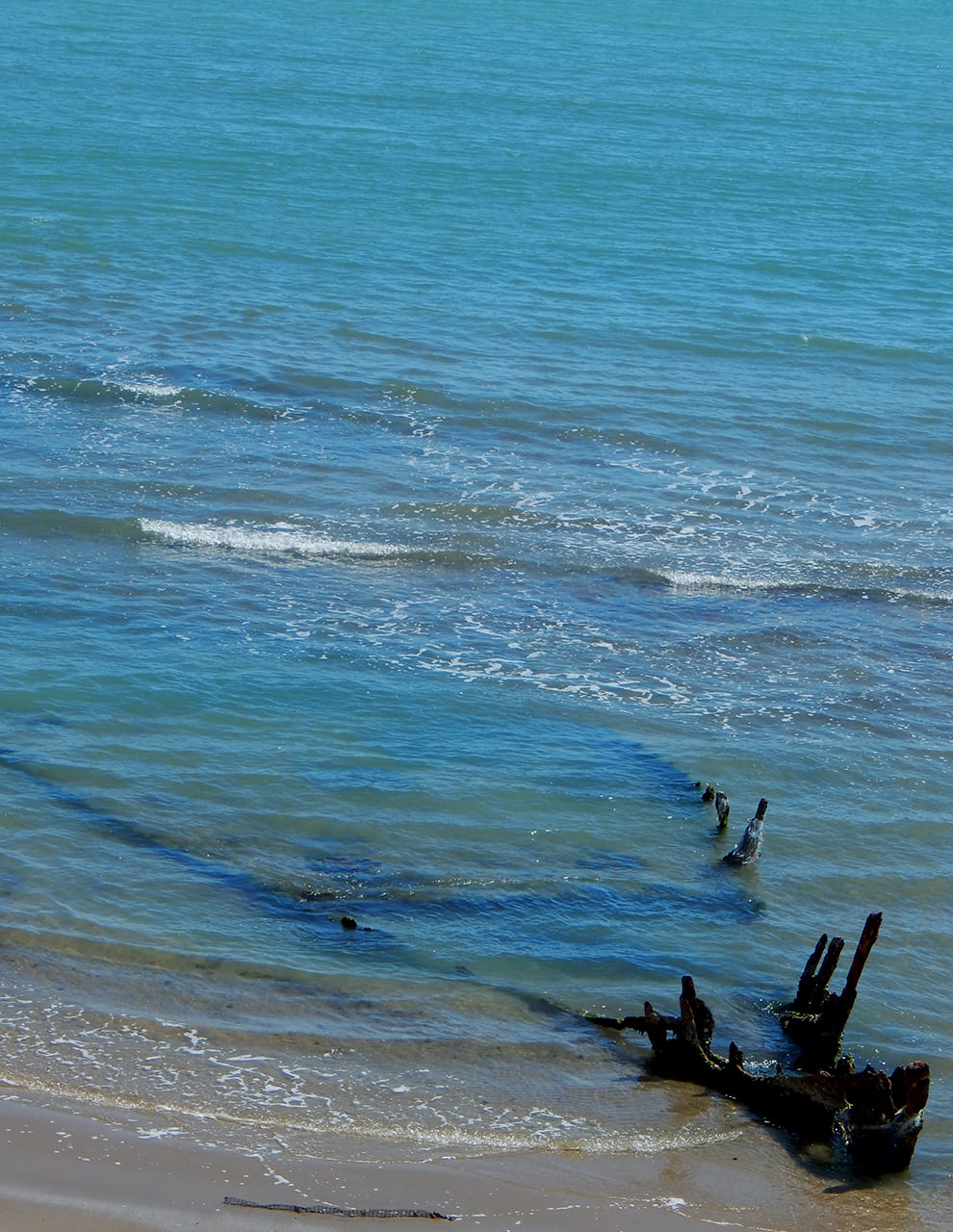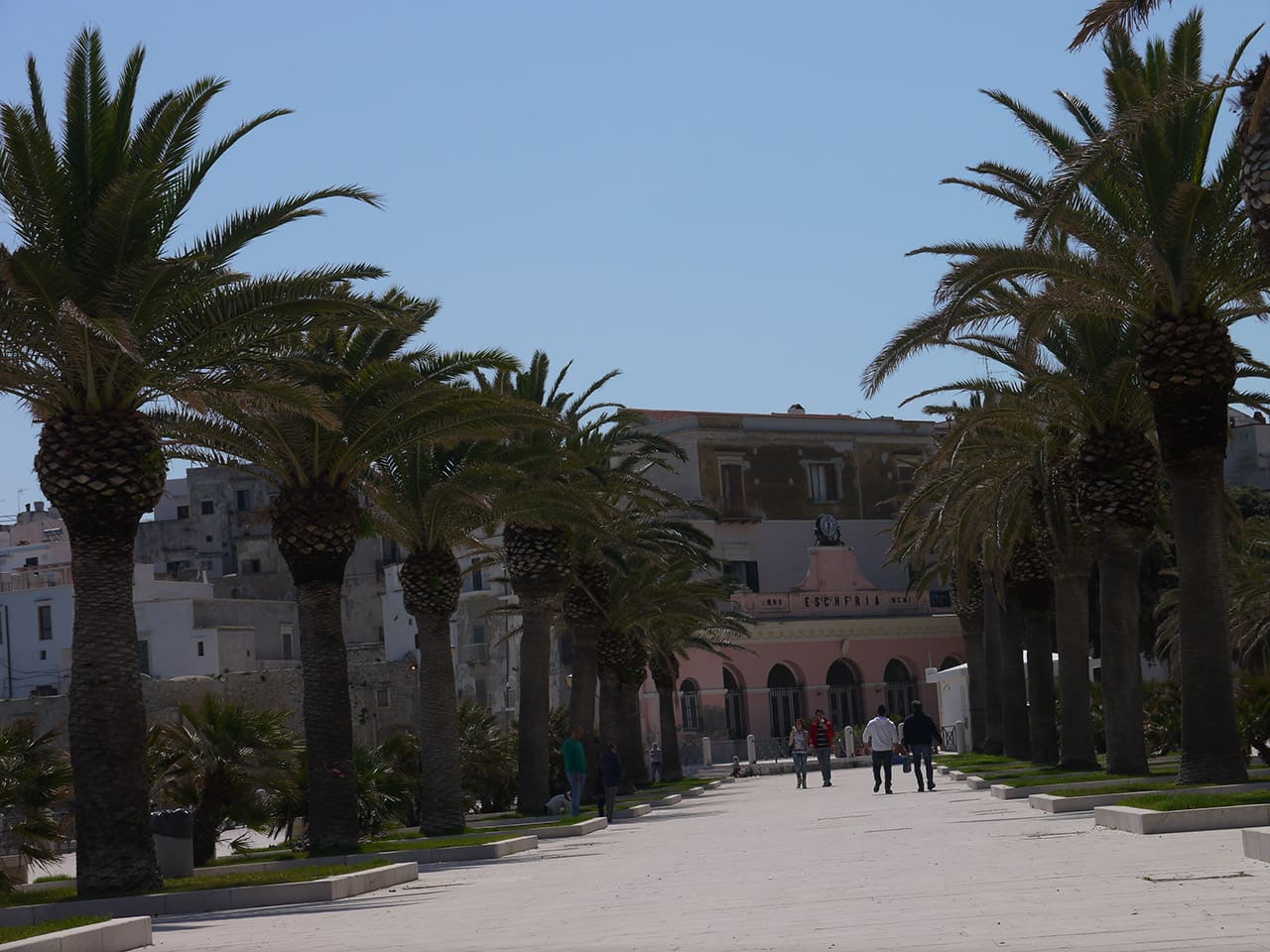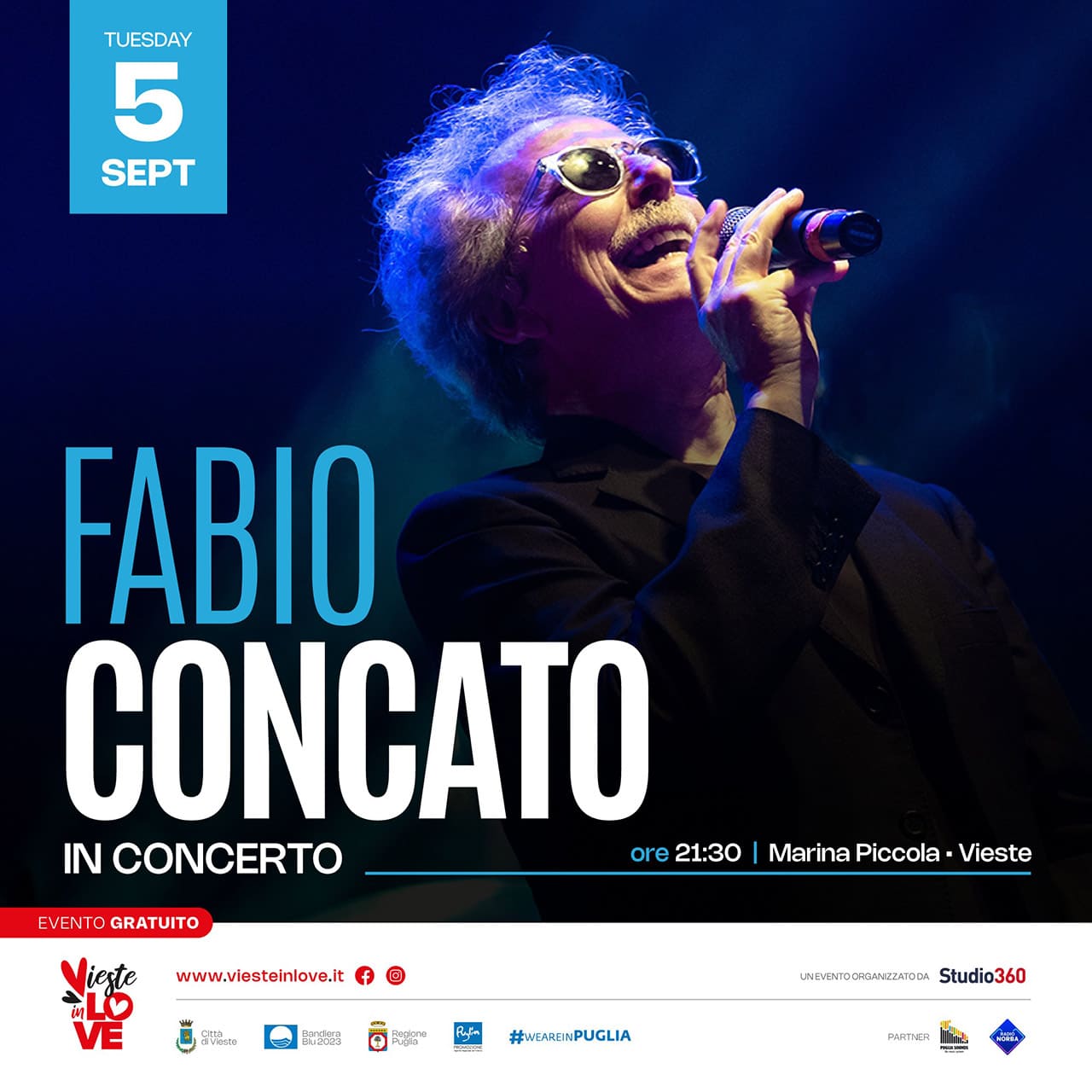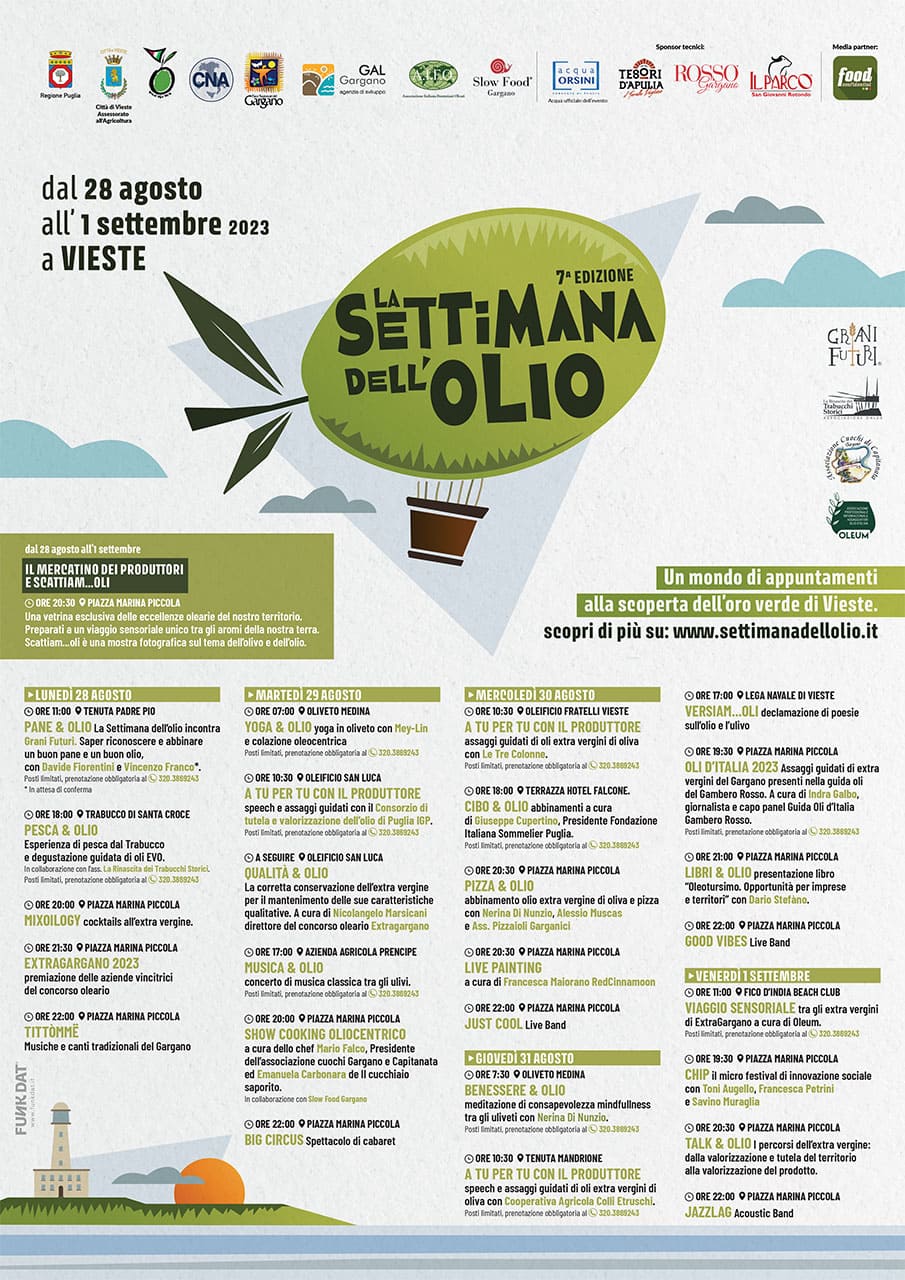La Marina Piccola è un’insenatura con una spiaggetta racchiusa da Punta San Francesco a destra, dall’isola del faro e da Punta Santa Croce a sinistra. Nei documenti di epoca angioina (XIV secolo) sappiamo che la spiaggia era usata come ricovero di barche perchè vi era un cantiere navale per le riparazioni dei natanti. La spiaggia, più grande rispetto ad oggi, fu usata per secoli dai pescatori per mettere in sicurezza le loro barche, riparare ed asciugare al sole le reti. All’inizio del Novecento iniziò la trasformazione del luogo con la realizzazione della strada, distrutta spesso dalle forti mareggiate invernali, e, successivamente, dai giardini pubblici diventando subito un luogo adatto per le passeggiate sopratutto nelle sere estive. Si affacciano intorno alla Marina Piccola anche l’antica pescheria costruita nel 1901 e la casa di riposo realizzata nel 1929 con il contributo della popolazione mentre, dietro il cinema, si trova il Palazzo Scannapieco. Questo edificio, costruito con materiali provenienti da Catania, fu realizzato da una squadra di operai siciliani che insegnarono ai muratori locali la realizzazioni di grandi edifici. Vicino il palazzo del cinema si intravede anche il relitto di una nave di ferro naufragata nel 1919.
Marina Piccola is a cove with a small beach enclosed by Punta San Francesco on the right, the island of the lighthouse and Punta Santa Croce on the left. In the documents of the Angevin era (XIV century) we know that the beach was used as a shelter for boats because there was a shipyard for repairs of boats. The beach, bigger than today, was used for centuries by fishermen to secure their boats, repair and dry nets in the sun. At the beginning of the 20th century the transformation of the place began with the construction of the road, often destroyed by strong winter storms, and, later, by the public gardens becoming immediately a suitable place for walks, especially in summer evenings. Around the Marina Piccola there is also the old fish farm built in 1901 with the old clock. In front of the sea is presente the town retirement home built in 1929 with the help of the population, while behind the cinema there is Palazzo Scannapieco. This building was realized by Michele Scannapieco and built by a team of sicilian workers. Scannapieco also brought from Catania the materials used for the construction. Near the cinema you can also see an iron ship that sank in 1919. This wreck, coming from Bari, was carrying iron and coal and was moored at the islet of the lighthouse, and was hurled on the Marina Piccola by a violent storm.

MULTIMEDIALE
In una casa con vista sulla Marina Piccola, il 5 Marzo 1887 nacque Sante Naccarati da Francesco Paolo ed Imperatrice Piracci. Fin da bambino Naccarati dimostrò una grande intelligenza e, dopo gli studi a Roma e a Napoli, si laureò a soli 25 anni in Medicina e Chirurgia e nel 1913 si trasferì a New York dove iniziò dove esercitare la sua professione. Dopo la parentesi della Prima Guerra Mondiale che lo vide medico nelle trincee per conto della Croce Rossa Italiana prima e di quella americana dopo, Sante Naccarati tornò negli Stati Uniti dove si fece ben presto apprezzare come neurologo ed insegnante in diverse università newyorkesi. Nonostante la fama e i successi però non dimenticò mai la sua Vieste dove ritornava a riposarsi in estate. Nella sua villa sulle colline fuori Vieste era un continuo pellegrinaggio di persone perchè offrì assistenza medica, sopratutto ai bisognosi, a cui offriva medicinali ed aiuti finanziari. Sante Naccarati morì a New York nel 1926. Avrebbe voluto vedere la sua Vieste progredire, diventare più moderna ed igienicamente più progredita e, a sorpresa di tutti, lasciò una cospicua parte della sua eredità proprio alla sua città d’origine per potersi munire di un efficiente sistema fognario e migliorare le condizioni igieniche della popolazione viestana.
In a house overlooking the Marina Piccola, on March 5, 1887, Sante Naccarati was born by Francesco Paolo and Imperatrice Piracci. As a child Naccarati showed great intelligence and, after studying in Rome and Naples, he graduated at the age of 25 in Medicine and Surgery and in 1913 he moved to New York where he began to practice his profession. After the interlude of the First World War which saw him as a doctor in the trenches for the Italian Red Cross before and the American Red Cross after, Sante Naccarati returned to the United States where he soon gained recognition as a neurologist and teacher at several New York universities. Despite his fame and success, however, he never forgot his Vieste where he returned to rest in the summer. In his villa on the hills outside Vieste he was a continuous pilgrimage of people because he offered medical assistance, especially to the needy, to whom he offered medicines and financial aid. Sante Naccarati died in New York in 1926. He would have liked to see his Vieste progress, become more modern and hygienically advanced, he left a large part of his legacy to his hometown in order to be able to equip himself with an efficient sewerage system and improve the hygienic conditions of the people of Vieste.
Sante Naccarati wurde am 5. März 1887 in der Gegend von Marina Piccola als Sohn von Francesco Paolo und Imperatrice Piracci geboren. Er war wirklich ein kluges Kind, studierte in Rom und Neapel, schloss sein Medizinstudium im Alter von 25 Jahren ab und zog 1913 nach New York. Während des Ersten Weltkriegs arbeitete er als Arzt für die Croce Rossa Italiana und dann für den amerikanischen. Danach kehrte er in die USA zurück, wo er ein berühmter Neurologe und Professor wurde. Er vergaß Vieste nie und kam jeden Sommer in sein Haus am Stadtrand von Vieste zurück, wo er allen Bedürftigen seine medizinischen Leistungen, Medikamente und auch finanzielle Hilfen anbot. Er starb 1926 in New York. Er liebte Vieste und wollte es vor allem in den sanitären Bereichen modernisieren. Überraschenderweise überließ er einen Teil seines Erbes der Stadt Vieste, um ein neues Abwassersystem zur Verbesserung der sanitären Bedingungen der Bevölkerung von Vieste zu realisieren.















